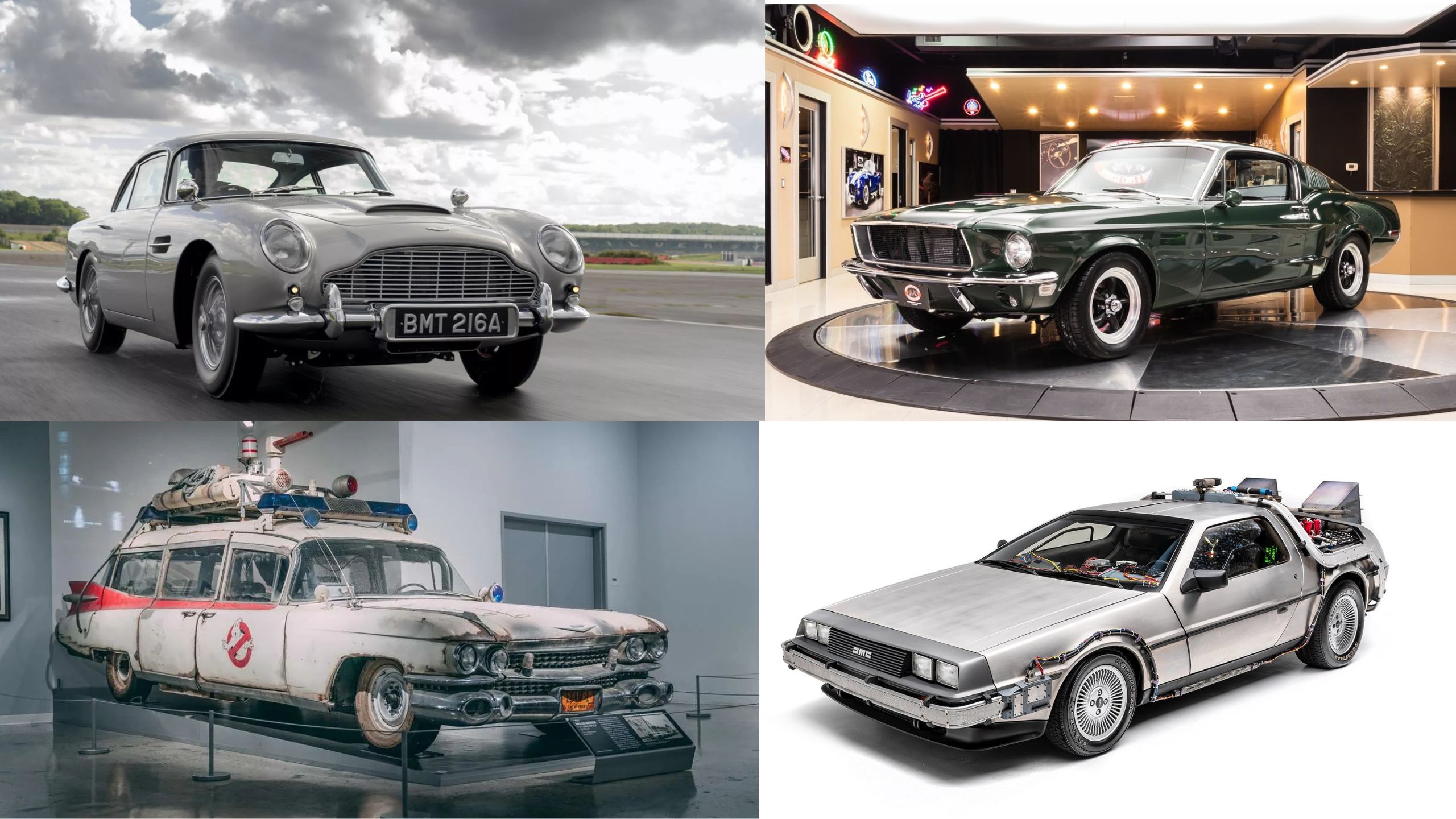Throughout the history of cinema, certain cars have transcended their roles as mere props to become genuine cultural icons.
These vehicles have not only enhanced the storytelling but have often become characters in their own right, leaving an indelible mark on popular culture.
From high-speed chases to futuristic adventures, these legendary automobiles have captured the imagination of audiences across generations, inspiring car enthusiasts and filmmakers alike.
Some were custom-built specifically for their films, while others were modified versions of production vehicles that gained immortality through their on-screen appearances.
These cars represent more than just transportation; they embody the dreams, aspirations, and fantasies of moviegoers worldwide.
Their influence extends beyond the silver screen, impacting automotive design, popular culture, and even consumer preferences.
This exploration of the twelve most legendary cars in movie history reveals how these mechanical stars have helped shape both cinema and automotive history.
1. DeLorean DMC-12 (Back to the Future)
The DeLorean DMC-12 from “Back to the Future” represents perhaps the most iconic marriage of car and cinema in history.
What began as a commercial failure for John DeLorean’s car company was transformed into an enduring symbol of time travel and 1980s futurism.
The car’s distinctive stainless steel body and gull-wing doors provided the perfect canvas for Doc Brown’s time machine, while the addition of the flux capacitor, time circuits, and hover conversion created a vehicle that has fascinated audiences for generations.
The film’s DeLorean underwent numerous modifications to achieve its iconic look. The nuclear reactor in the rear, the elaborate time displays in the cabin, and the famous light arrays were all custom additions that transformed the production car into a character in its own right.
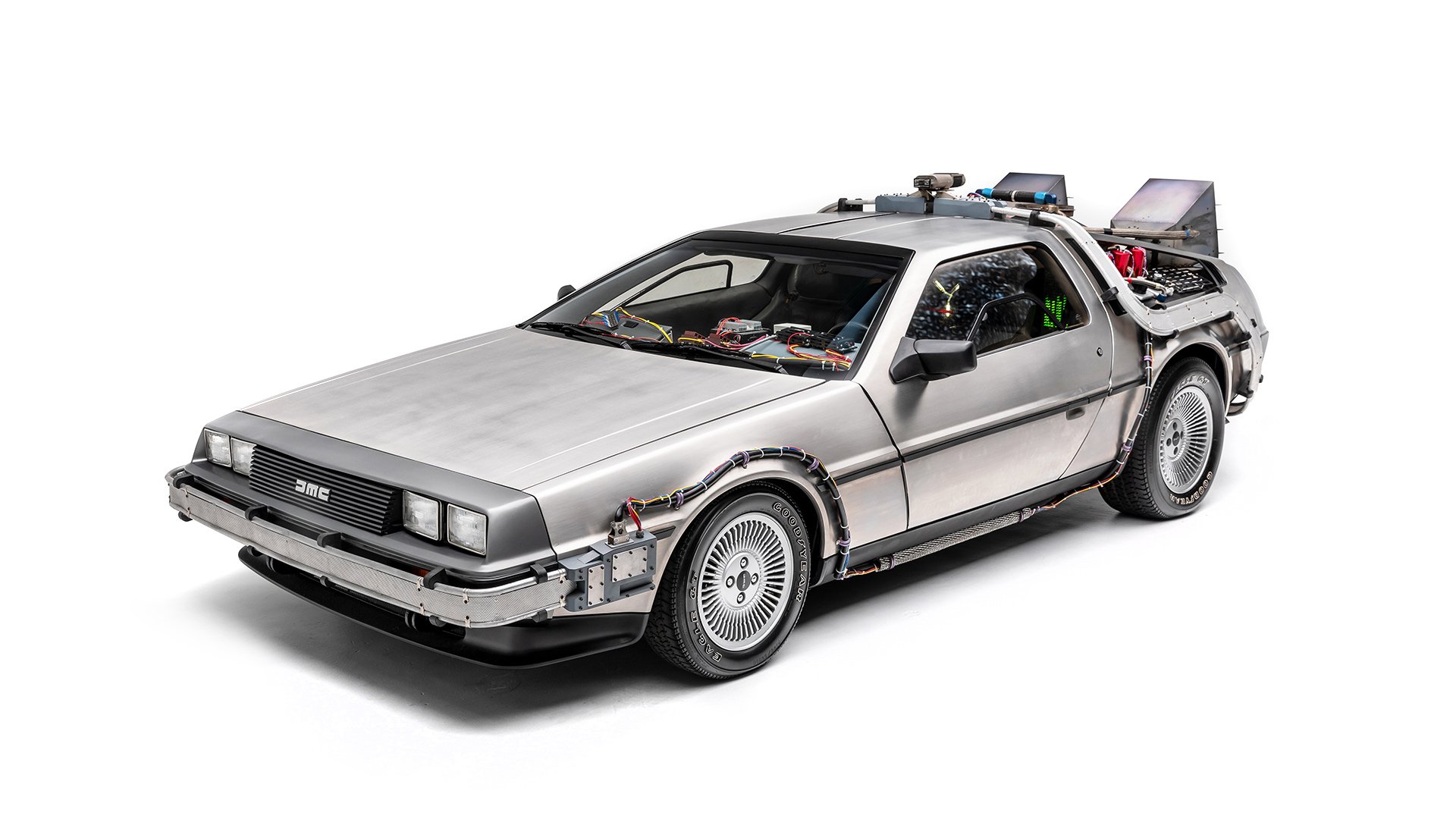
The vehicle’s ability to achieve time travel at 88 miles per hour, leaving behind flaming tire tracks, has become one of cinema’s most recognizable sequences.
What makes this car truly legendary is its impact beyond the film. The DeLorean DMC-12 was already out of production when “Back to the Future” was released in 1985, but the movie gave the car an immortal status.
Today, surviving DeLoreans are highly sought after by collectors, and many owners modify their vehicles to replicate the time machine’s appearance.
The car’s influence extends to popular culture, with countless references and homages in other media, making it arguably the most recognizable movie car of all time.
2. Aston Martin DB5 (James Bond Series)
First appearing in 1964’s “Goldfinger,” the Aston Martin DB5 became the definitive James Bond car, representing the perfect blend of British elegance and spy-thriller excitement.
The silver birch DB5, chassis number DP/216/1, was modified by special effects expert John Stears with an array of gadgets that would set the standard for all future Bond cars.
These included ejector seats, machine guns behind the front indicators, rotating number plates, and an oil slick dispenser.
The car’s impact on popular culture was immediate and lasting. Aston Martin, which was relatively unknown outside of racing circles, became a household name.
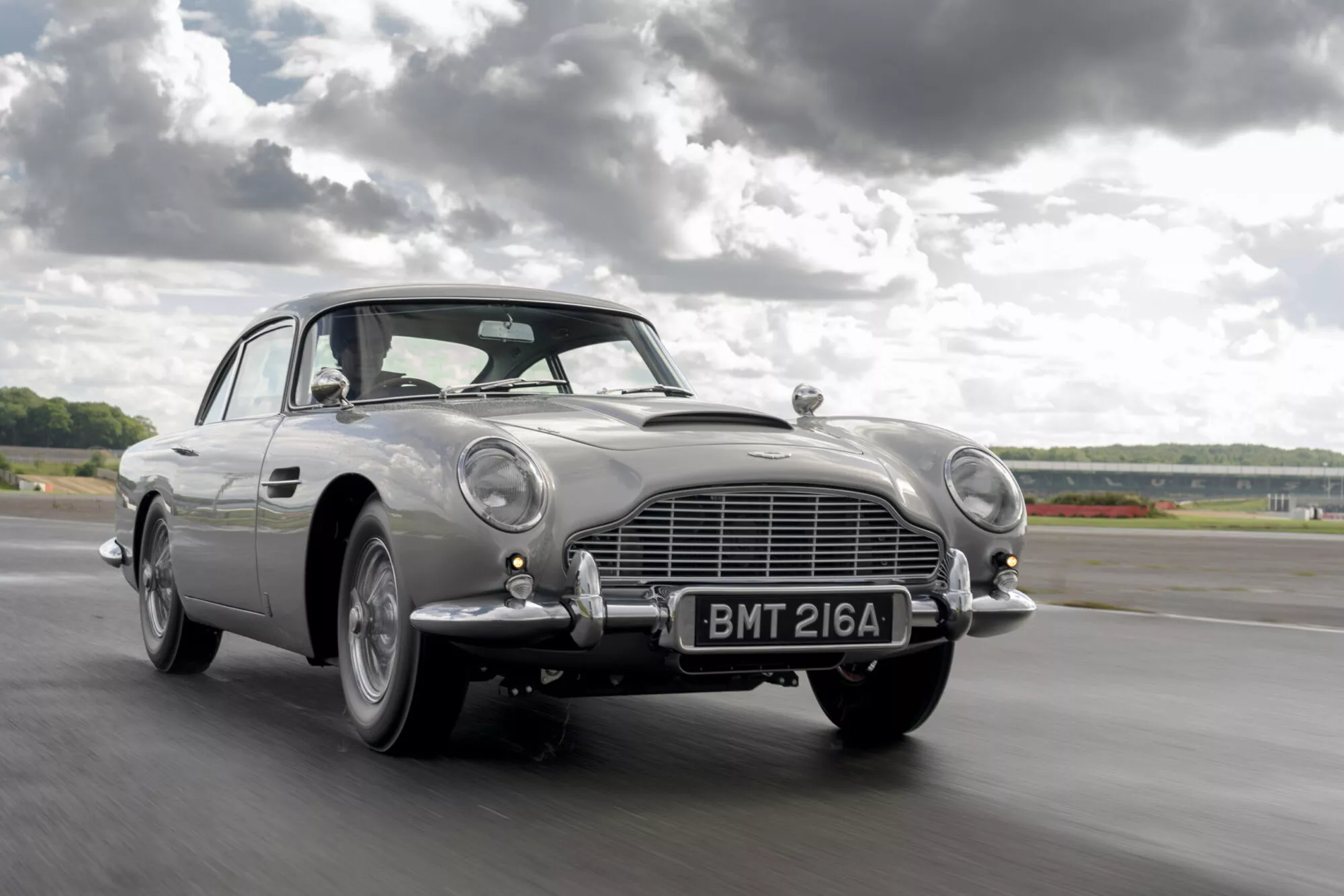
The DB5’s appearances in “Goldfinger” and “Thunderball” helped establish it as the ultimate gentleman spy’s car, combining luxury with lethal capability.
The original film car’s mysterious disappearance in 1997 only added to its legendary status. The DB5’s influence continues to resonate through the Bond franchise, with the car making memorable appearances in modern Bond films including “GoldenEye,” “Casino Royale,” “Skyfall,” and “No Time to Die.”
Each return to the screen has reinforced its iconic status while introducing it to new generations.
The car’s enduring appeal has led Aston Martin to produce limited edition DB5 continuation cars, complete with working gadgets, demonstrating how a movie car can transcend its original role to become a legitimate part of automotive history.
3. 1968 Ford Mustang GT Fastback (Bullitt)
The Highland Green 1968 Ford Mustang GT Fastback driven by Steve McQueen in “Bullitt” achieved legendary status through what is widely considered one of the greatest car chase sequences ever filmed.
The ten-minute chase through the streets of San Francisco revolutionized how car chases were shot and edited, setting a new standard for automotive action in cinema.
Two identical Mustangs were used for filming, with extensive modifications to handle the demanding stunts.
The cars were fitted with upgraded suspension, brakes, and engines, while camera mounts were welded to the body.
The chase sequence’s authenticity, with minimal special effects and real stunt driving, created a visceral experience that continues to influence filmmakers today.
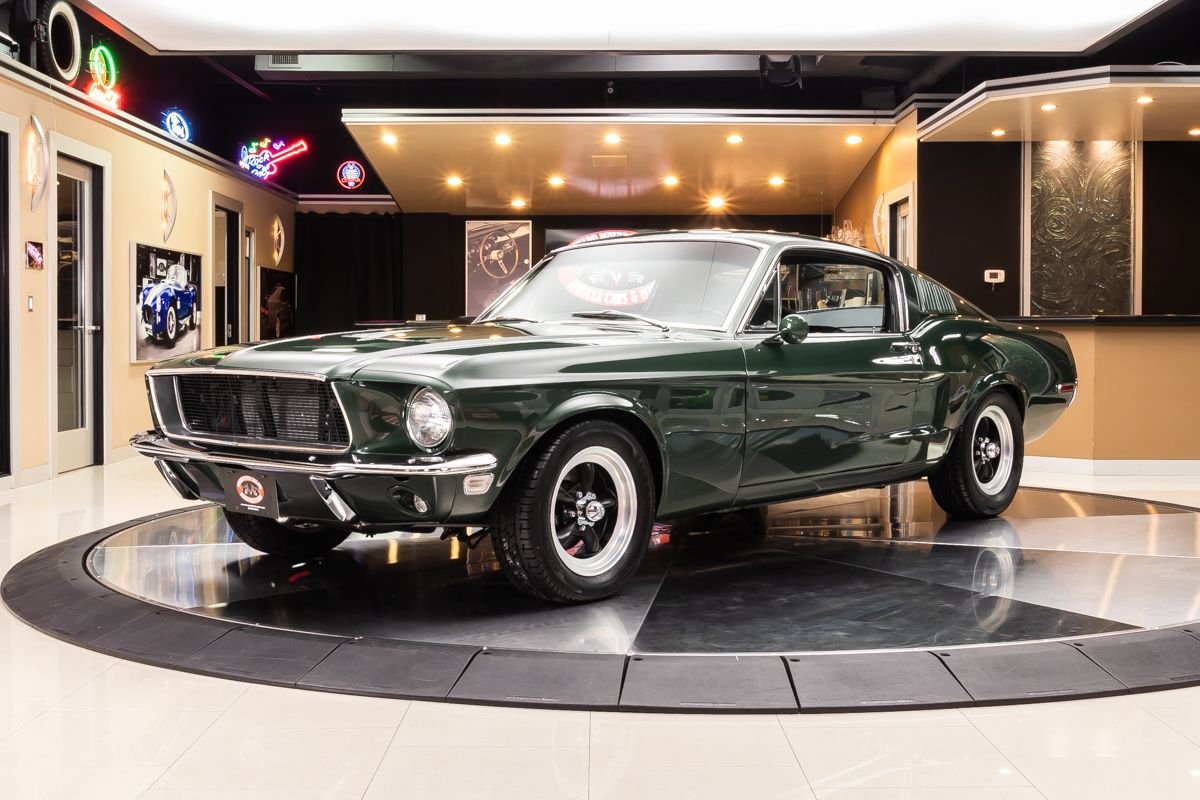
The sound of the Mustang’s 390 V8 engine, combined with McQueen’s expert handling, created an unforgettable automotive symphony.
The film’s Mustang has had a lasting impact on automotive culture. Ford has released several Bullitt edition Mustangs over the years, each paying homage to the original movie car.
The recent discovery and public auction of the original hero car, which sold for $3.74 million, demonstrates the enduring fascination with this particular vehicle.
The Bullitt Mustang represents more than just a movie car; it embodies the essence of American muscle cars and the golden age of automotive cinema.
4. Ecto-1 (Ghostbusters)
The converted 1959 Cadillac Miller-Meteor Futura Duplex, better known as the Ecto-1, serves as both a vital tool and a beloved character in the “Ghostbusters” franchise.
Originally conceived as a sinister black vehicle, the production team opted for a white and red color scheme that would become instantly recognizable.
The car’s transformation from a neglected hearse to the Ghostbusters’ primary vehicle mirrors the film’s blend of the supernatural with everyday New York City life.
The Ecto-1’s distinctive modifications include an array of paranormal detection equipment, sirens, ladder racks, and the iconic Ghostbusters logo.
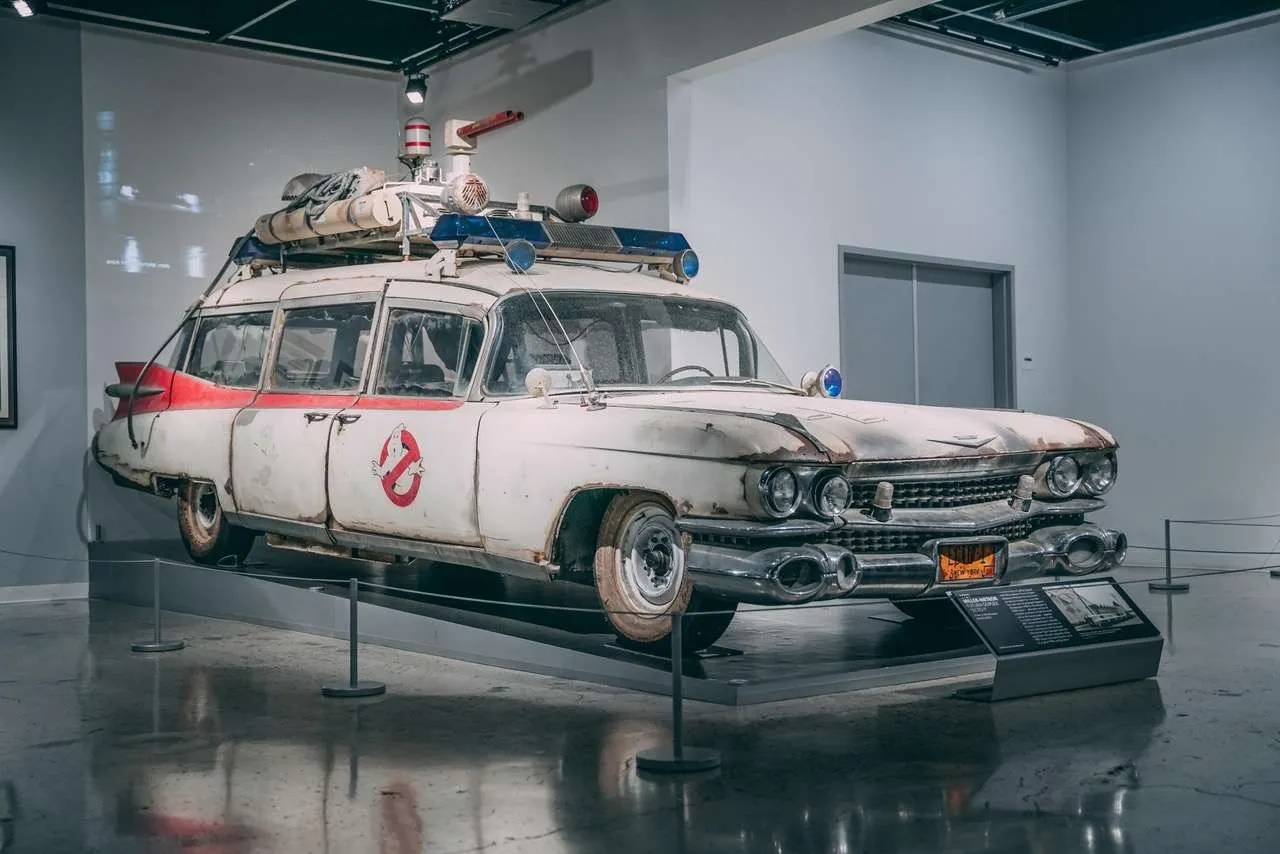
The vehicle’s unique siren wail became as recognizable as the film’s theme song, while its elaborate roof rack of scientific equipment helped establish the pseudo-scientific credibility of the Ghostbusters’ operation.
The car’s deteriorating condition throughout filming added to its character, making it feel like a genuine working vehicle rather than a pristine movie prop.
The Ecto-1’s influence extends far beyond the original film. It has appeared in sequels, animated series, and the 2016 reboot, each time maintaining its essential character while incorporating modern updates.
The car has inspired countless replicas built by fans, and its design has influenced real-world emergency vehicle modifications.
The Ecto-1 represents how a movie car can become a cultural touchstone, embodying the spirit and humor of its franchise.
Also Read: 10 SUVs with the Best Safety Ratings in Rollover Accidents
5. Batmobile (1989 Batman)
The 1989 Batmobile, designed by Anton Furst for Tim Burton’s “Batman,” reinvented the iconic vehicle for a new generation.
Moving away from the modified Lincoln Futura of the 1960s TV series, this Batmobile presented a darker, more aggressive design that matched the film’s gothic atmosphere.
The car’s jet-turbine intake, long hood, and swept-back fins created a silhouette that perfectly balanced form and function.
Built on a Chevrolet Impala chassis with a Chevrolet V8 engine, the car featured numerous practical and theatrical capabilities.
These included grappling hook launchers, machine guns, and the famous Cocoon mode that deployed armor plating to protect the vehicle.
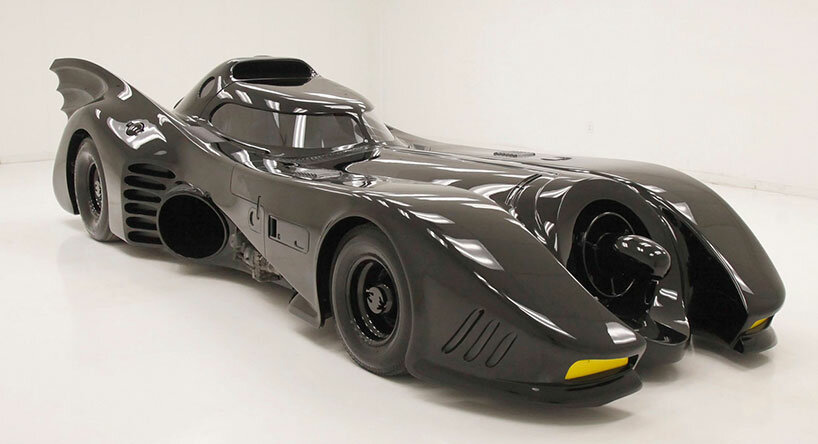
The car’s jet turbine engine effect was achieved through a combination of propane tanks and careful sound design, creating the illusion of incredible power.
The 1989 Batmobile’s influence on subsequent Batman vehicles and superhero car design cannot be overstated.
Its combination of military hardware and theatrical design elements set the template for future Batmobiles, while its practical effects and real-world functionality made it believable as a crime-fighting tool.
The car remains a favorite among fans and has inspired numerous replicas and tributes, demonstrating how a well-designed movie car can become an enduring symbol of its character.
6. 1977 Pontiac Trans Am (Smokey and the Bandit)
The black and gold 1977 Pontiac Trans Am from “Smokey and the Bandit” became a symbol of American automotive rebellion and style.
The film showcased the car’s capabilities through numerous stunts and high-speed chases, with Burt Reynolds’ Bandit using the Trans Am to outrun law enforcement across the southeastern United States.
The car’s distinctive appearance, complete with the screaming eagle hood decal and T-top roof, helped make it a cultural icon.
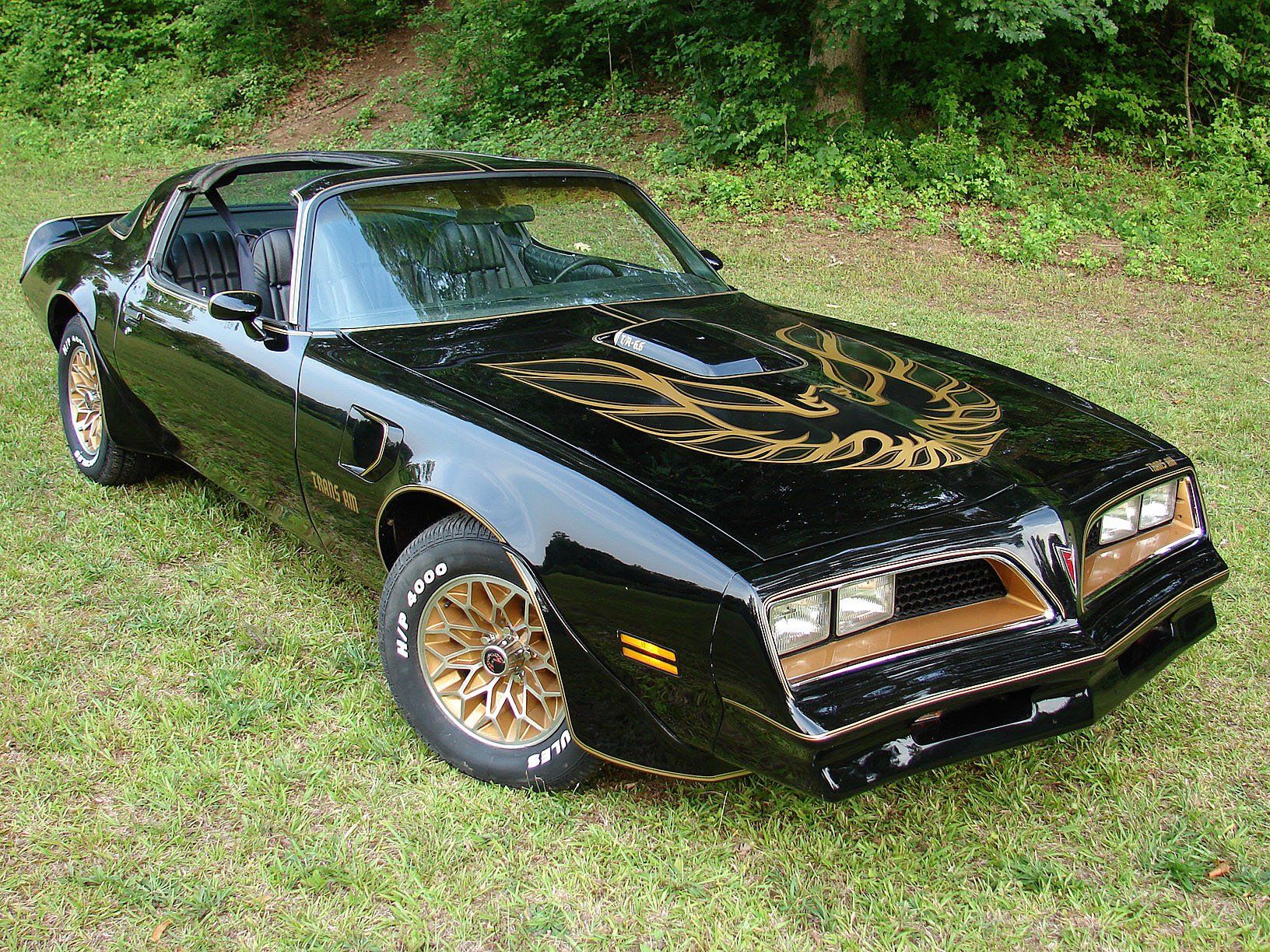
Four Trans Ams were used during filming, with most being destroyed in stunts. The car’s performance was enhanced for filming, though many of the stunts were achieved through skilled driving rather than special effects.
The famous bridge jump scene, where the Trans Am leaps over a dismantled bridge, became one of the most memorable automotive stunts of the 1970s.
The film’s impact on Pontiac sales was dramatic, with Trans Am sales nearly doubling after the movie’s release.
The black and gold color scheme became so popular that Pontiac continued offering it as the “Y82 Special Edition” package.
Today, these “Bandit” Trans Ams are highly sought after by collectors, and the car’s influence can be seen in modern muscle car design and automotive culture, particularly in its celebration of American performance cars and rebellion against authority.
7. 1961 Ferrari 250 GT California (Ferris Bueller’s Day Off)
The Ferrari 250 GT California from “Ferris Bueller’s Day Off” represents the ultimate aspirational vehicle of the 1980s.
Due to the rarity and value of the actual Ferrari, the production used specially built replicas by Modena Design.
These replicas captured the essence of the original while allowing for the physical comedy and eventual destruction required by the script.
The car’s presence in the film symbolizes freedom, rebellion, and the allure of luxury. The film’s famous “Ferrari” scenes, including the joy ride through Chicago and the car’s eventual destruction, have become classic moments in cinema history.
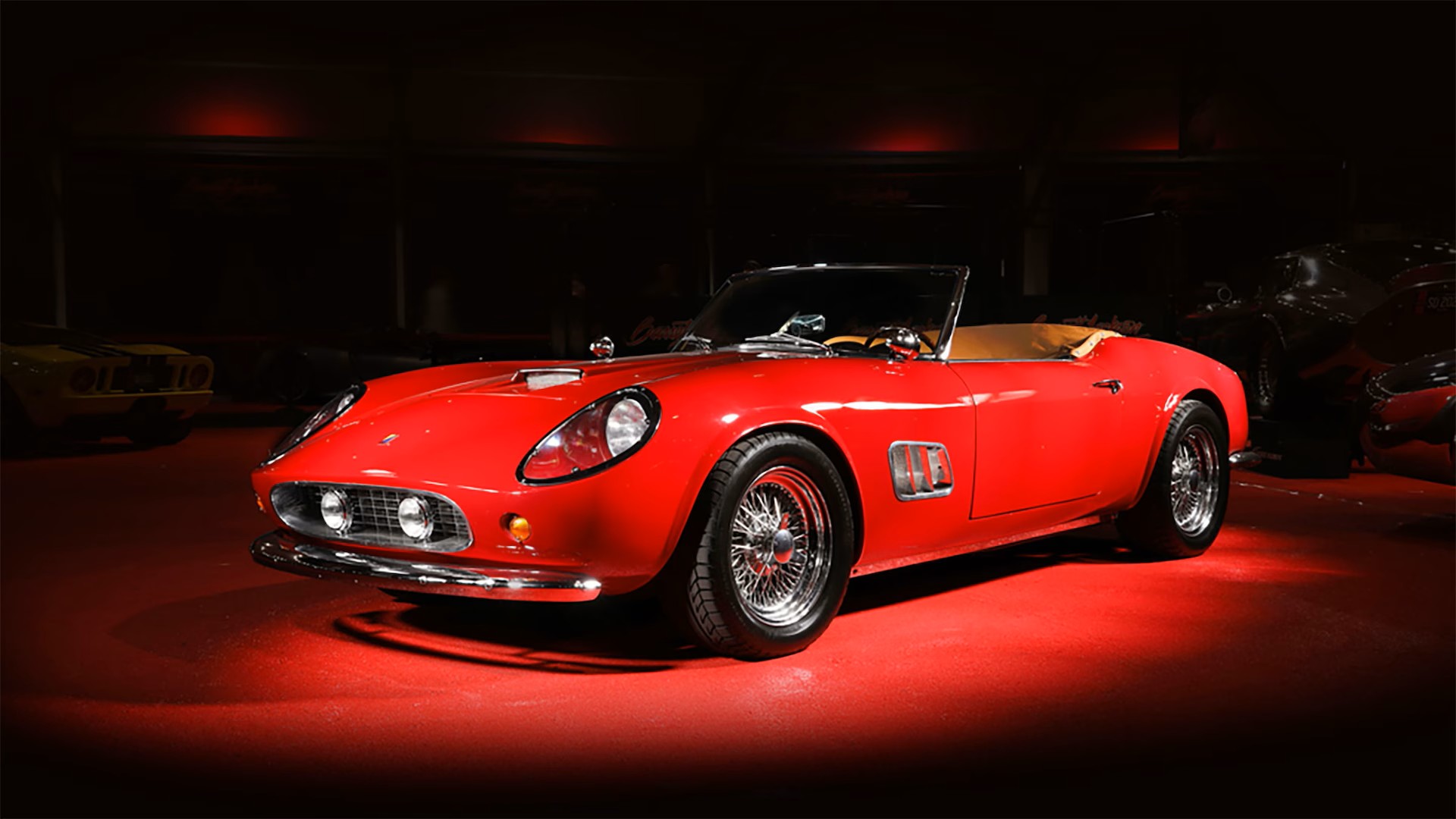
The careful cinematography and sound design made the replica cars convincing stand-ins for the real Ferrari, while the character Cameron’s father’s obsession with the car highlighted themes of materialism and father-son relationships.
The impact of this car’s appearance extended beyond the film. Interest in classic Ferraris, particularly the 250 GT California, increased significantly after the movie’s release.
The replica cars used in filming have themselves become collectors’ items, sometimes selling for more than genuine Ferraris of the same era.
The car’s role in the film continues to influence pop culture, representing both the ultimate teenage fantasy and a commentary on materialism in American culture.
8. General Lee (The Dukes of Hazzard)
The 1969 Dodge Charger known as the General Lee from “The Dukes of Hazzard” became one of television’s most recognizable vehicles.
Painted in bright orange with the Confederate flag on the roof and the number “01” on the doors, the car performed seemingly impossible stunts throughout the series.
Nearly 300 Chargers were used during the show’s run, with many being destroyed in the famous jump scenes.
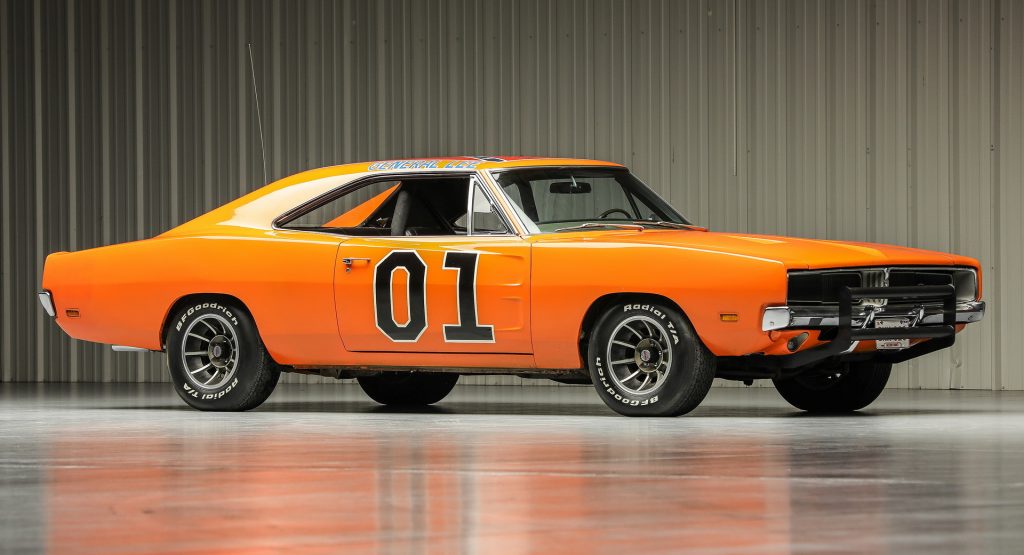
The car’s modifications included a roll cage, heavy-duty suspension, and additional bracing to handle the extreme stunts.
The iconic horn playing “Dixie” became a signature element, while the welded-shut doors forced the Duke boys to slide in through the windows, creating a memorable character trait.
The car’s ability to escape pursuing law enforcement through spectacular jumps and precise handling made it a star in its own right.
The General Lee’s influence on car culture was significant, inspiring countless replicas and tributes.
The car helped establish the Dodge Charger as an icon of American muscle cars and influenced the custom car scene.
While contemporary views on some of the car’s symbolism have evolved, its impact on automotive television and stunt work remains significant, demonstrating how a vehicle can become a central character in storytelling.
9. Mini Coopers (The Italian Job)
The 1969 Mini Coopers from “The Italian Job” showcased the perfect combination of British ingenuity and automotive athleticism.
The red, white, and blue Minis, chosen for their small size and agility, became stars of one of cinema’s most famous chase sequences.
The cars’ ability to go through Turin’s narrow streets, stairs, and even buildings demonstrated their versatility while creating unforgettable movie moments.
The film required significant modifications to the Minis, including reinforced subframes, uprated suspension, and larger fuel tanks.
The chase sequences were carefully choreographed to highlight the cars’ unique capabilities, with the Minis escaping through sewers, over rooftops, and across various obstacles.
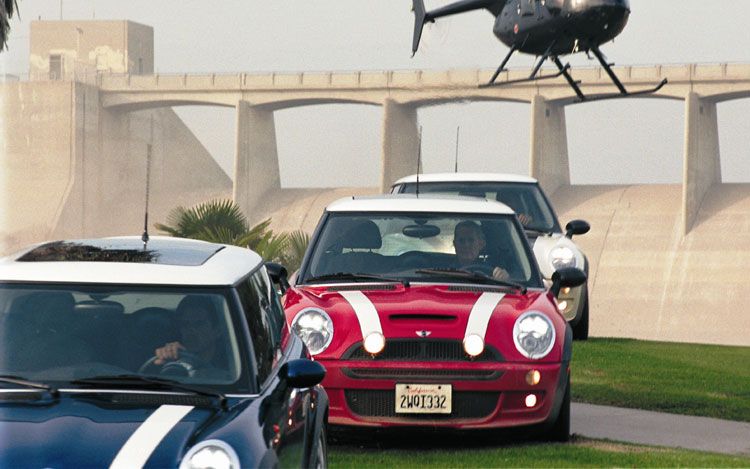
The stunt driving and practical effects created a sense of realism that continues to impress audiences.
The film’s impact on the Mini’s reputation was enormous, cementing its status as a cultural icon.
The success of the movie helped establish the Mini as more than just a small economy car, highlighting its potential for performance and adventure.
The 2003 remake paid homage to the original by featuring modern Mini Coopers in similarly spectacular chase sequences, demonstrating the enduring appeal of these small but mighty movie stars.
10. Eleanor (Gone in 60 Seconds)
The 1967 Ford Mustang Shelby GT500, known as “Eleanor” from the 2000 remake of “Gone in 60 Seconds,” represents one of the most influential movie cars of the modern era.
The custom-built vehicle, designed by Steve Stanford and Chip Foose, featured a unique body kit, custom paint, and numerous performance modifications.
Eleven cars were built for filming, with each serving different purposes from beauty shots to stunt work.
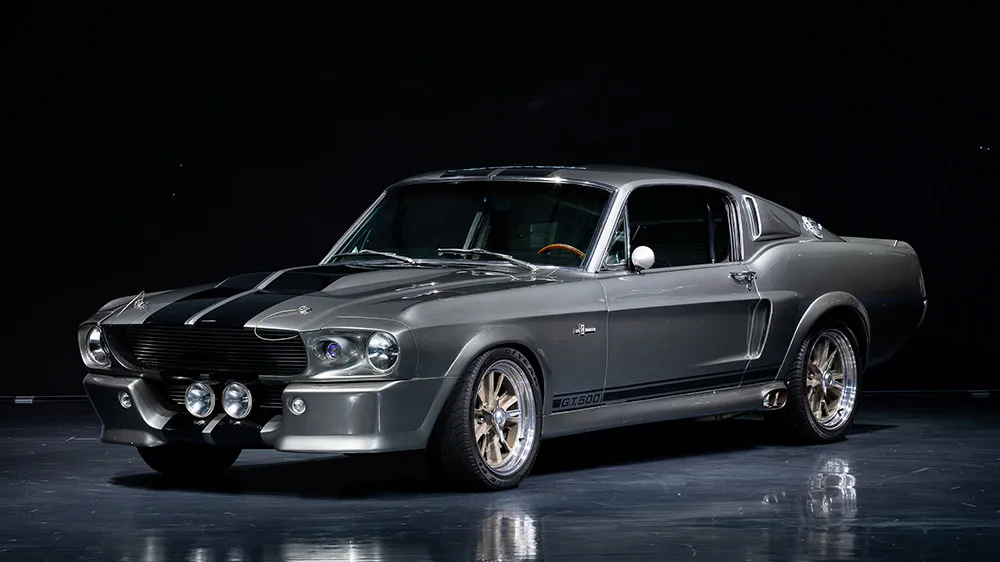
The car’s distinctive appearance, including the centrally mounted driving lights, side exhaust pipes, and custom hood, created a new template for resto-mod Mustangs.
The film’s climactic chase sequence through Los Angeles showcased Eleanor’s capabilities, with practical stunt driving and minimal CGI creating authentic automotive action.
The car’s personality as a challenging final target for Nicolas Cage’s character added depth to what could have been just another vehicle.
Eleanor’s impact on car culture has been substantial. The design has inspired countless replicas and influenced modern Mustang modifications.
However, the name “Eleanor” itself has become a subject of legal controversy, with the holder of the intellectual property rights actively protecting the design and name.
This legal situation has made Eleanor one of the few movie cars with its copyright protection, demonstrating its significant cultural and commercial value.
11. Light Cycle (Tron)
While not a traditional automobile, the Light Cycle from “Tron” represents one of the most influential vehicle designs in cinema history.
The original 1982 film’s computer-generated Light Cycles created a new vision of future transportation, combining motorcycle elements with digital aesthetics.
The vehicles’ ability to generate solid light trails during arena combat created a unique visual spectacle that has influenced science fiction design for decades.
The Light Cycle’s design, created by Syd Mead and Jean Giraud, broke new ground in computer animation and vehicle conceptualization.
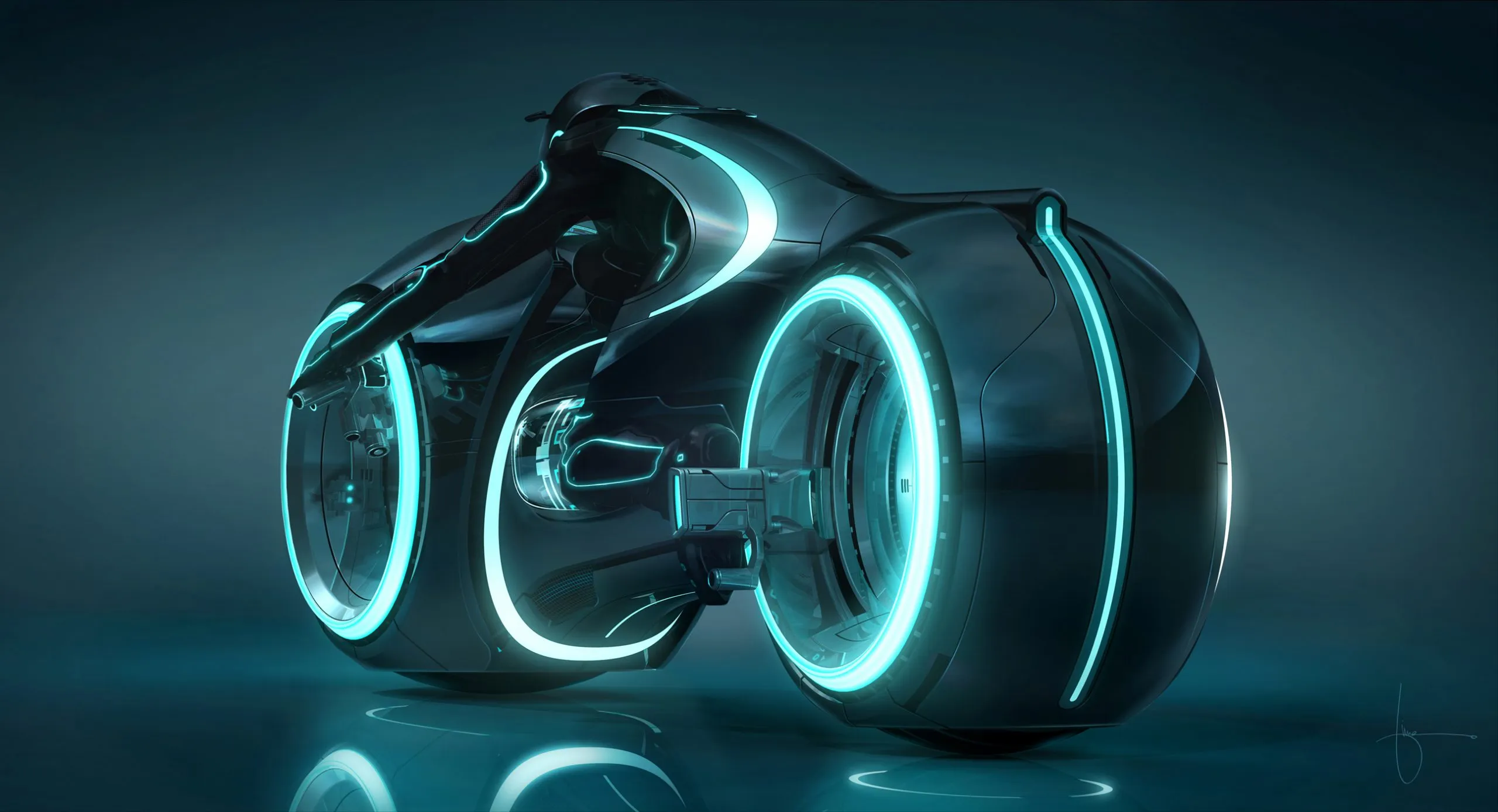
The digital nature of the vehicles allowed for impossible physics and innovative features that would influence both real-world motorcycle design and future science fiction vehicles.
The 2010 sequel “Tron: Legacy” updated the design while maintaining the original’s iconic elements.
The Light Cycle’s influence extends beyond cinema into video games, toy design, and even real-world motorcycle concepts.
Several manufacturers have created motorcycles inspired by the Light Cycle’s design, while the vehicle’s aesthetic continues to influence futuristic vehicle design in media.
The Light Cycle demonstrates how a purely fictional vehicle can shape real-world automotive design and popular culture’s vision of the future.
12. Lotus Esprit S1 (The Spy Who Loved Me)
The white Lotus Esprit S1 that transforms into a submarine in “The Spy Who Loved Me” represents one of the most memorable vehicles in James Bond history.
Known as “Wet Nellie,” the car’s transformation from a sleek sports car to a functioning submarine created an unforgettable sequence that combined cutting-edge special effects with real engineering innovation.
Multiple versions of the car were created for different aspects of filming, including a fully functional underwater vehicle.
The Esprit’s design by Giorgetto Giugiaro provided the perfect foundation for the submarine conversion, with its wedge-shaped profile and clean lines lending themselves well to underwater movement.
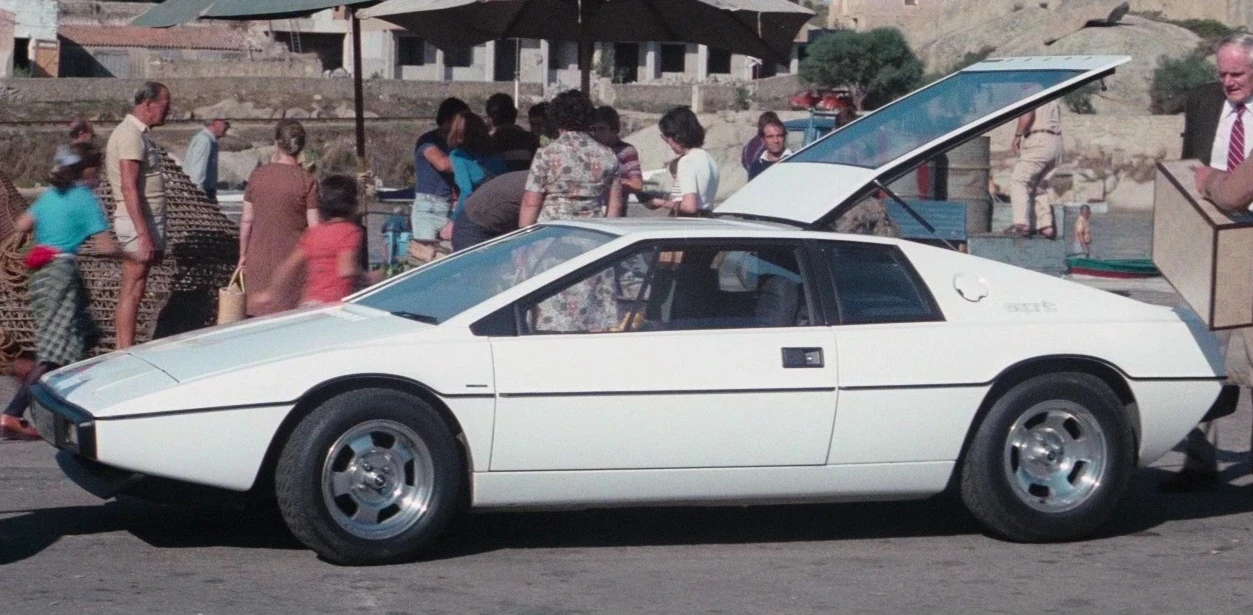
The film’s effects team created a convincing transformation sequence using hydraulics and clever editing, while the underwater scenes were filmed using a custom-built submarine shell that perfectly replicated the car’s exterior.
The impact of this appearance on Lotus was significant, with Esprit sales increasing dramatically after the film’s release.
The car’s dual-purpose capability influenced future Bond vehicles and sparked public interest in amphibious vehicles.
In 2013, Elon Musk purchased one of the original promotional vehicles with plans to convert it into a functioning submarine car, demonstrating the enduring fascination with this legendary movie vehicle.
Also Read: 10 Vehicles with the Strongest Safety Cages for Protection

